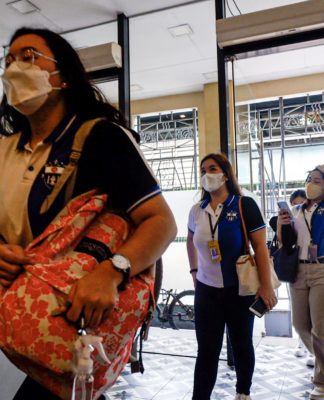ASIDE from gift-giving, street carolling and reunions, Christmas itinerary of Filipinos won’t be complete without attending the Holy Mass at an unholy hour, as simbang gabi.
The Church practice involves attending nine consecutive dawn Masses in anticipation of the Savior’s birth.
Human sacrifice
The simbang gabi is a Filipinized tradition that originated from Germany. It is originally known in Latin as rorate, an antiphon, a devotional composition sung responsively as part of a liturgy, found in Book of Isaiah.
“This was celebrated in the dawn to signify the light that comes after which was Christ who dispels us from darkness and sin,” said Msgr. Nestor Cerbo, Manila Cathedral rector.
He said that the rorate Mass can be celebrated in two ways, one of during the four Saturdays of Advent and for nine consecutive days, the type popular among Filipinos.
“The nine-day novena Mass signified the nine months the Virgin Mary was expecting our Savior. So in the rorate mass, you were also like Mary expecting joyfully for His coming,” he said.
In the Philippines, the rorate Mass was known as aguinaldo and misa de gallo, which literally mean gift and mass of the rooster, respectively.
The Church has so far made the simbang gabi accessible to those who cannot make it during dawn through anticipated evening masses. But surprisingly, some of their parishioners have requested to celebrate dawn masses also in the mornings which prompted the Church to release a circular controlling the time of the simbang gabi.
“The sacrifice we endure in waking up early and the devotion to attend the dawn masses is the gift we give to Jesus,” Cerbo said.
However, with the secularization of Europe, rorate Masses were no longer practiced among Christian nations and the Filipinos are the only one who had kept such tradition.
“We [the Church] are trying to avoid what happened in Europe. And it cannot go that direction unless the Church curb the influence of secularization,” he said.
Dwindling essence
The simbang gabi has clearly enriched the Filipino culture and its strong Cathcolic tradition.
“It has in a way enhanced and Christianized our culture and it has greatly affected our [the Filipinos] social life,” Cerbo said.
However, although he observed a yearly increase among those who attend the simbang gabi, the essence by which the masses are celebrated is also depriving.
“The simbang gabi generally has become a meeting place among friends. This has also become as ‘simbang-gimmick,’ ‘simbang-ligaw,’ and ‘simbang-tulog,’” Msgr. Cerbo said.
Amid the negative turn-out of this tradition, the Church reminds the public to remember the real essence of simbang gabi.
















